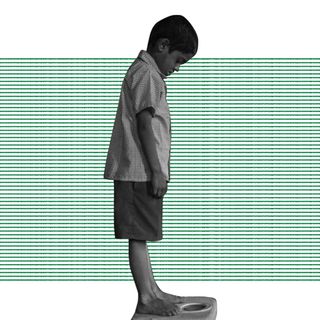Cooking with solid fuels such as wood or coal heightens the risk of developing major eye diseases that can lead to blindness, according to a new study highlighting the dangers of long-term exposure to solid fuels.
Reportedly, half the world’s population — more than 800 million people in India — are exposed to household air pollution from cooking fuels. According to a study from March this year almost half of India’s urban poor households were found to be using traditional fuel sources like wood and charcoal.
Published in the journal PLOS Medicine last week, the study was conducted between 2004 and 2008, where the researchers assessed the impact of exposure to cooking fuels on 512,715 individuals aged 30-79 years in China. The experts compared people’s cooking habits to their records of hospital admissions for major eye diseases, or health insurance reimbursements.
The results demonstrated a “clear association between cooking with wood or coal and an increased risk of substantial eye diseases,” DownToEarth reported.
Over a 10-year follow-up period, the researchers found people using solid fuels in the long-term were at 32% higher risks of conjunctivitis, 17% of cataracts, and 35% of other disorders of the sclera, cornea, iris, and ciliary body (DSCIC) — compared to those who used clean fuels like electricity, or gas.
“The increased risks may be caused by exposure to high levels of fine particulate matter (PM2.5) and carbon monoxide, which can damage the eye surface and cause inflammation,” Peter Ka Hung Chan, who studies population health at Oxford University, and co-authored the study, said in a statement. In other words, small particles released from fumes of burning solid fuel can result in physical interior damage.
Related on The Swaddle:
Gas Stoves Are Exposing People to Alarming Air Pollution Levels Indoors: Report
“[T]he general public should be informed about the potential risks of eye diseases, some of which are highly disabling, related to solid fuel use,” said Liming Li from the Department of Epidemiology and Biostatistics at the Peking University in China, who co-authored the study.
Among solid fuels, researchers didn’t find one variety increasing the risk of conjunctivitis or cataract more than any other. However, using wood alone did increase the risk of getting DSCIC — than using a combination of wood and coal for cooking.
“Environmental factors and societal traditions, such as cooking with solid fuel, can have a big effect on eye health and show the need to work across all levels of health systems to improve outcomes,” Imran Khan from Sightsavers, an international NGO working in developing countries to treat and prevent avoidable blindness, who was not involved in the study, commented.
The risk was found to be slightly lesser for those who switched from solid to clean fuels. The study also found that ventilation mechanisms — like chimneys — didn’t significantly bring down the risk.
“From government to communities, it’s important to raise awareness of eye conditions, reduce these avoidable causes, and provide accessible health services,” Khan added.




